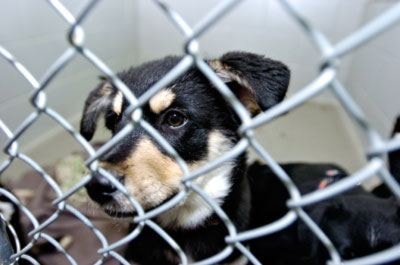By Genesee Keevil
Senior Reporter
When Pat (not her real name) adopted a new puppy from the Mae Bachur Animal Shelter, she had no idea it was carrying a highly contagious and deadly disease.
She adopted the puppy on Wednesday. That night it started vomiting, said friend Linda Magill.
“She cleaned up the puke, and she’s cleaned up puke before, but this really stunk—it was just revolting,” said Magill.
The puppy was taken to the vet the next morning.
It was diagnosed with parvo, said Magill.
The disease typically hits puppies, said Alpine Veterinary Medical Centre vet Kim Friedenberg.
“A puppy’s immune system is not as competent as an adult’s—it affects a small portion of the small intestine, and they typically die of dehydration because of severe vomiting and diarrhea.”
It’s passed from one dog to another through fecal/oral contamination, added Friedenberg.
“So it’s spread by poop or poop residue that’s been somehow sniffed or touched and ends up in their mouth and intestinal tract.”
General quarantine procedures involve disinfecting any area where the dog’s been, commonly using a one-to-10 diluted bleach solution, he said.
But it’s hard in a house, because if the puppy’s been all over the carpet, you can’t squirt the carpet down with bleach, said Friedenberg.
“You do your best, and hope other dogs’ vaccines are up to date.”
Dogs with current vaccinations are usually immune to the disease.
In the last six months, Friedenberg’s only seen two cases of parvo in adult dogs.
“And the adults that got it had never been vaccinated” he said.
Once Pat learned her puppy had parvo she contacted Magill, whose dog had been playing with the puppy the night before.
Magill took her dog to the vet as well, and was told because it was older and vaccinated, it would probably not contract the disease.
“The vets told (Pat) to go to the Mae Bachur shelter right away and let them know the puppy had parvo,” said Magill.
“But when she went back to the shelter to report the problem she was not treated very nicely.”
Pat reported the problem to the animal shelter’s administrator “and the response in a very aggressive tone was, ‘So what are you going to do? Are you wanting to surrender the dog to us?’” said Magill.
At the time she’d only had the puppy for about 16 hours, and still plans to keep it, but she just had to leave it at the pound until it was treated so it wouldn’t infect her older dog, said Magill.
With or without treatment, parvo can last two to14 days, said Friedenberg.
“And we always recommend no contact with other dogs for an additional 10 to 15 days after.”
“There are no cases of parvo here,” said Mae Bachur administrator Tracy Smythe on Thursday.
But what about Pat’s new puppy, a case confirmed by the vets?
Smythe didn’t acknowledge it.
“There was a (different) case, but she’s over that now,” said Smythe.
“It was last week, or the week before.”
And that puppy is not yet available for adoption.
“She’s still in her isolation period,” said Smythe.
When a dog gets parvo, it needs to be quarantined, said Friedenberg.
“When contact is made with the animal, the person should be in a full gown that also stays in isolation, and have gloves on,” he said.
“Isolation is a two-room situation, with a change room, like the little room in the movies, inside the isolation room.”
And air should always be sucked into the isolation room, and spit out where it won’t cause nay problems, said Friedenberg.
“And there need to be disinfectant dips for shoewear.”
“I don’t know what (the shelter) uses for isolation,” he said. But it has infloor heating, so air exchange is less of a worry.
“Of course” people suited up before contacting the puppy, said Smythe.
“We’re not worried at all about anyone else having it.”
But when she was filling out paperwork on Saturday, Pat saw someone playing with the cute puppy in isolation, then noticed them walk out of the room toward the other dogs, said Magill.
(When contacted, Pat refused to discuss any parts of Magill’s story because she feared she wouldn’t get her puppy back.)
“At any shelter I’ve worked at in past, parvo and distemper have been the main problems,” said Friedenberg.
“There’s so much in there it’s hard to keep it totally out of that environment.”
“It’s happened in the past,” said Smythe, discussing cases of parvo.
“It’s just one of those things.
“We take them over to vets; they’re treated by the vets, and come back over when they’re fine.”
Friedenberg has seen more cases of parvo in the Yukon than most other areas.
“There’s an increased risk in rural areas where people don’t vaccinate many of the dogs,” he said.
“And parvo can last in the soil for 10 to 15 years, even with our temperatures.”
Each year, litters come down with the disease, said Friedenberg.
“But in the last three years, the numbers are pretty similar.
“We’ve seen a few spikes in last four weeks, but it’s nothing unusual.”
Contact Genesee Keevil at
gkeevil@yukon-news.com
